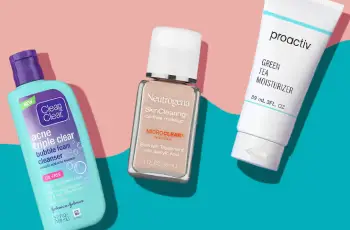
When skincare products come with labels like “chemical acid,” alarm bells ring. It sounds scary, bad, and the exact opposite of what we should be giving our skin care and protection.
But these ingredients—AHAs, BHAs, PHAs—are (or can be) derived from natural plant sources. In many other contexts, we continue to view the terms “chemical” and “acid” as villains on their own, but when you combine them to talk about skin care and cosmetics, they get the green light.
Chemical acids are active ingredients that we know have biological effects on the skin or skin health. They are ingredients in formulas that are designed to deliver the dramatic effects that the product promises. Like opening pores, softening fine lines, and even skin tone. But be aware that the strength and concentration of the active ingredient used, as well as your skin type, can affect how dramatic the changes are.
The word “chemical” is only used to describe the type of exfoliation (as opposed to the more familiar and perhaps more traditional physical exfoliation). Instead of using rough or jagged particles to remove dead skin cells, we use these naturally occurring chemicals to create a similar reaction and get better results. The exfoliation is more thorough and the skin tone is more even, which is why we prefer this method.
To break down the term “acid,” I’d say anything that has a pungent odor, tastes sour, has a pH below 7, and causes corrosion. But some kind of skin context is missing, right? So I called Nick, the technical director of Go-To’s Peachy Lab: “When it comes to exfoliation, we generally talk about hydroxy carboxylic acids. How they work and why they’re called that has a lot to do with the structure of the molecule and how close the hydroxyl group is to the carboxylic acid group. When there’s one carbon atom between these ingredients, we call them alpha (hydroxy acids), when there’s two carbon atoms between them, we call them beta (hydroxy acids), and when there are lots and lots of hydroxyls, we call them poly (hydroxy acids).”
When used topically responsibly (no lemon on your face, please), chemical acids help dissolve the proteins that hold skin cells together. This removes dead cells from the skin’s surface, revealing a smoother, more radiant complexion.
Depending on the strength of the acid, you may actually see peeling with your naked eye. Have you ever noticed that after exfoliating, you see little flakes fall off your face? Yes, you are absolutely right. These are dead cells.
So, tell us about the natural sources!
AHAs: Typically obtained from sugar cane and fruits (lemon, grapefruit, tomato), and also found in milk.
BHAs: Typically obtained from willow bark, holly or sweet birch trees and fruits (berries, pineapple, papaya).
PHAs: Typically derived from corn and potatoes.


